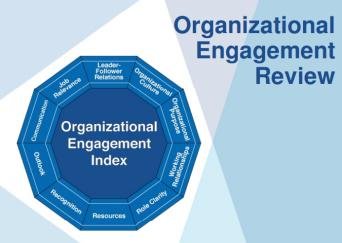THE MOST IMPORTANT QUESTION TO ASK WHEN MEASURING EMPLOYEE ENGAGEMENT
Most companies have come to recognize that there is a direct correlation between employee engagement and financial results. Employees who are engaged give discretionary effort and do the right things for their employers. That translates into better business results. However, too many companies fail at effectively measuring employee engagement. In working with several clients on their culture and employee engagement, we have found that companies often confuse employee satisfaction with employee engagement. The two terms are used synonymously, yet their definitions are quite different.
A search for images related to employee engagement return numerous images much like the one below. The image of smiling employees has very little to do with engagement and much more to do with satisfaction.
In fact, what I have found is that the times in my own career that I have been most engaged have not been the times I have been most satisfied. Typically there is a challenge at work or something is not going well, that in turn has lead me to boost my engagement based on my dissatisfaction.
Employee satisfaction is focused on what the employees “Get” from the organization. Measuring satisfaction can tell leaders whether their employees feel fairly compensated, whether they like their work area, whether the benefits are meeting their needs, whether the office organizes fun events, has good coffee and a number of other hygiene factors. Satisfaction is important, but satisfaction does not correlate to business results. A company can spend significant resources trying to please employees, but that may be the wrong approach if driving business results is the key motivator.
Employee engagement is focused on what employees “Give” to the company. An engaged employee does the right things daily and has the best interests of their organization at heart. The engaged employee is willing to go above and beyond to get the job done correctly and treats the business as if they are an owner. That extra discretionary effort does translate into improved business results.
Too many of the engagement survey tools in the marketplace measure what employees get versus what employees give. The tools measure satisfaction not engagement. The result is that organizations spend time, money and effort chasing the wrong behaviors.
The one question that every company needs to ask when measuring employee engagement is: Who Cares? Two simple words that carry a lot of weight. If your employees care about their work and about their company, then they are engaged. If all they care about is what the company is doing for them, then they are not engaged, but possibly satisfied. There are several approaches that can be taken to effectively measuring employee engagement. Measuring engagement can be as simple as observing the behaviors of your employees. Do their actions show that they truly care or are they just there to get the job done?
After reviewing and utilizing several survey tools, our practice has come to rely on the Organizational Engagement Review (OER), an engagement survey developed by Leading Dimensions Consulting. We have found the tool to measure the right behaviors for engagement rather than satisfaction. The tool measures engagement along ten dimensions. The cost effective OER provides organizations with a very clear snapshot of the level of employee engagement in a cost effective and easy to deploy solution. (Learn more about the OER in our assessment section by clicking here)
f you want to measure employee engagement in your organization, start with the simple question, Who Cares? The answer to that question will provide you with a very good pulse on your organization.




